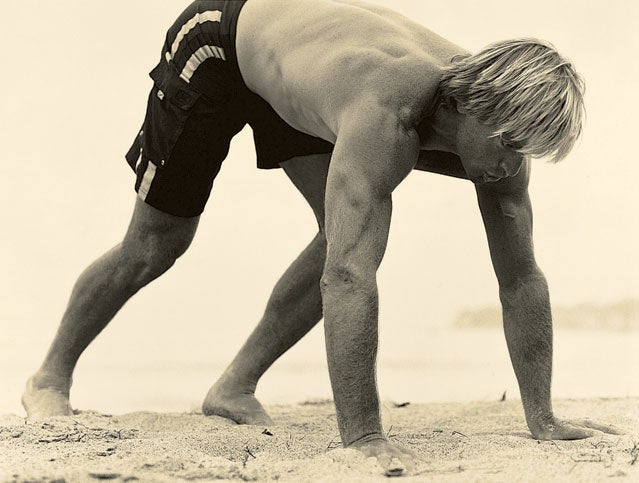THERE'S PLENTY OF RESEARCH focused on helping elite athletes optimize, and stick with, their training, but what most of us need is advice on how to fold fitness into a life not sponsored by a power drink. This begins with some rigorous introspection. Why get fit in the first place? What's the point? There are the superficial reasons. Guilt after a physical. Panic over, say, an impending surf trip. Ego. Vanity. Better reasons include the intrinsic value of exercise: how it can help stave off disease; how it stimulates the brain's production of serotonin, a natural mood-booster; how it keeps energy up and blood pressure and appetite down.
But the real answer is more simple and obvious. Getting in shape is nothing moreÔÇöand nothing lessÔÇöthan a means to an end. You can take off on a surf safari with dignity intact, run a half-marathon with your spouse and not seek couples counseling afterward, or ski black-diamond runs, fast, without sacrificing an ACL to the cause. You'll find troubleshooting tips (“Barriers and Breakthroughs”), but the general wisdom is this: nail down a goal and you've found the wellspring of motivation, the fountain of fit.
Which is all well and good as long as you also have some solid infrastructure that will accommodate the day-to-day logistics of an ostensibly lifelong exercise plan. ConvenienceÔÇöor, rather, inconvenienceÔÇöis a tremendous gumption trap. “Have a training regimen for every environment you find yourself in,” says Ed Jackowski, author of Escape Your Shape and owner of Exude Fitness in New York. “When you can't make it to the gym after work, you have to have something you can do at home.”
Got a spare room? A basement? A backyard? Consider turning an unused space into a low-tech home gym. The Shape of Your Life requires only a few pieces of basic equipmentÔÇöa bench, dumbbells, a stability ball (also called a physio or Swiss ball), a new jump rope, and a plyometric boxÔÇöthat shouldn't run you more than $200. This modest tool kit is all you need to do brief-but-intense resistance training, ├á la Bill Phillips's , the best-selling exercise book that seemed to have everyone who followed it looking like Joe Piscopo in a mere 12 weeks. You may not be after the freakish physique of a bodybuilder (if you're like me, the thought of waxing your chest gives you chills), but reams of research and fitness experts from coast to coast tout the benefits of lifting weights.
Next, you need a strategy, and nothing has proven itself more effective than the concept of periodizationÔÇöcyclic bouts of expansion and retrenchment designed to build fitness. By following a specifically staggered schedule you give your body a chance to regenerate enough to spring forward a few days later. After all, your muscles, and the capillaries that transport blood to fuel them, grow during rest, not during exertion. Simply alternating cardio and strength days, while important, is not enough. As a diagram, periodization might look something like those blocky steps and valleys you see on preset treadmill programsÔÇögo hard, ease off; go hardest, ease off; go hard; ease off. The popular training programs developed by ÔÇöauthor of The Mountain Biker's Training Bible and The Triathlete's Training BibleÔÇöpresent a monthly workout schedule in which the third week is the hardest of the four. The key is to create a program with multiple layers of periodization, taking the staggered approach within each workout, each week, each month, and ultimately through the duration of your program. “Periodization is the most likely way to achieve athletic success,” says Friel.


